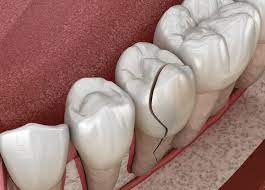Who Truly Benefits from Psychedelic Assisted Therapy? An In-Depth Exploration
Though research is still ongoing, it’s becoming increasingly clear that psychedelic assisted therapy offers powerful potential for healing and growth. By combining carefully administered psychedelic substances with professional therapeutic support, it provides another option for conditions that have long resisted traditional treatments. From treatment-resistant depression to end-of-life anxiety, from PTSD to addiction recovery, psychedelic assisted therapy is demonstrating remarkable potential to catalyze deep healing and personal transformation.
Unlike conventional therapy, which often requires months or years of regular sessions to achieve breakthrough insights, psychedelic therapy can sometimes facilitate profound realizations and emotional releases in just a few carefully guided sessions. However, this is not a quick fix or magical solution. As with any significant therapeutic approach, the true power of this method lies in its combination of the psychedelic experience itself with careful preparation beforehand and essential integration work afterward— all conducted under professional guidance in a controlled, therapeutic setting.
The field of psychedelic assisted therapy continues to evolve at a rapid pace. Expanded access to treatment, refined protocols for different conditions, and greater availability of training for professionals are all emerging. As research advances, there is growing potential for this approach to become a widely recognized option for those in need.
This guide explores who might benefit from psychedelic assisted therapy, what conditions it can address, and what important considerations to keep in mind when looking into this transformative practice.
Understanding Psychedelic Assisted Therapy
Psychedelic therapy combines the guided use of psychedelic substances with professional therapeutic support. Unlike recreational use, this structured approach unfolds in a controlled setting with trained practitioners who guide participants through preparation, the experience itself, and crucial integration afterward.
Scientific breakthroughs have provided new insight into how psychedelics create therapeutic effects in the brain. At their foundation, these substances appear to promote neuroplasticity— the brain’s ability to form new connections between neurons. It is as if the brain temporarily opens new pathways, making it possible to rewire in healthier and more adaptive ways.
This is different from how traditional psychiatric medications work. While many conventional treatments influence serotonin levels externally, psychedelics appear to activate deeper processes inside the neurons themselves. They stimulate specific receptors that trigger the growth of new connections, called dendritic spines, which allow neurons to communicate more effectively. This capacity to reorganize may help the brain escape the rigid patterns of thinking and behavior often linked to depression, anxiety, and trauma.
Still, the biological effects are only one part of the equation. Preparation, supervised support during the experience, and integration work afterward are just as vital in translating these neural changes into meaningful, lasting benefits.
What Makes Psychedelic Assisted Therapy Different From Traditional Therapy?
Traditional therapy generally requires ongoing sessions over long periods before major breakthroughs occur. Psychedelic therapy, on the other hand, can sometimes accelerate this process, allowing deep insights and emotional releases in just a few sessions. By temporarily enhancing neuroplasticity, psychedelics create a state where the brain is more open to change. When combined with skilled therapeutic guidance, this window of flexibility can facilitate profound shifts in perspective and behavior.
Research also emphasizes the importance of the therapeutic environment for success. Building trust, fostering openness, and allowing unconscious processes to surface are seen as essential elements of the psychedelic assisted therapy approach.
What Are the Benefits of Psychedelic Therapy?
While every individual’s journey is unique, research highlights specific groups that may particularly benefit from psychedelic therapy. Clinical studies and treatment programs have shown promising results for people facing conditions that often resist conventional treatment approaches.
These encouraging findings are significant, as they offer new hope where traditional therapies and medications sometimes fall short.
Mental health conditions where psychedelic therapy may be effective include:
- Depression: Showing strong potential for treatment-resistant cases.
- Anxiety: Especially existential anxiety associated with terminal illness.
- PTSD/C-PTSD: Allowing individuals to process trauma in transformative ways.
- Addiction: Demonstrating results for both substance use and behavioral dependencies.
- OCD: Early studies suggest potential benefits for obsessive patterns.
Beyond addressing clinical diagnoses, psychedelic assisted therapy can support individuals seeking greater self-awareness, enhanced creativity, and improved problem-solving. Many also report deeper relationship connections and an expanded sense of purpose, often with elements of spiritual exploration woven into the process.
How Psychedelic Assisted Therapy Helps These Different Groups

People with treatment-resistant depression
For those who haven’t found relief through conventional antidepressants or therapy, psychedelic assisted therapy offers a fresh avenue of possibility. The experience may interrupt cycles of negative thinking, spark new perspectives, and restore a sense of meaning and wonder that depression had diminished.
Trauma survivors, PTSD, and C-PTSD
Trauma can lock individuals into patterns of fear and hypervigilance, making it difficult for talk therapy alone to break through. Psychedelic assisted therapy may provide a space where traumatic memories can be revisited with reduced overwhelm, allowing the nervous system to shift and new resilience to emerge.
Those facing end-of-life anxiety
For people living with terminal illness, psychedelic assisted therapy can help ease existential fear and anxiety around mortality. Many report a sense of peace, acceptance, and even spiritual connection that reframes their relationship with death, bringing comfort and clarity.
Addiction recovery
In addiction treatment, psychedelic therapy may open pathways to understanding the deeper roots of dependency. Participants often report breakthroughs in recognizing destructive patterns, greater motivation to change, and strengthened connections to meaning and purpose— all of which can support long-term recovery.
Cognitive flexibility for creativity and problem-solving
For those in creative fields or problem-solving roles, psychedelic assisted therapy can provide a boost in flexibility and innovation. By breaking down rigid thought structures, individuals often discover fresh approaches, reduced performance anxiety, and increased inspiration.
The Three Stages of Psychedelic Assisted Therapy — What to Expect
Psychedelic assisted therapy generally unfolds in three distinct stages that together shape the journey and maximize its potential for healing.
1) Preparation
The preparatory phase involves working with a therapist or care team to explore intentions, clarify goals, and establish trust. This step also includes guidance on what to expect, as well as strategies for navigating challenging moments during the experience.
2) Medication
The core psychedelic sessions take place under careful supervision, usually spanning several hours. During this time, participants are supported in a comfortable setting, often with elements like calming music or eye masks to encourage inward focus. Some facilitators remain neutral observers, while others offer more direct guidance, depending on the individual’s needs and preferences.
3) Integration
After the sessions, integration work becomes the bridge between insight and lasting transformation. Therapists help participants process their experiences, understand the meaning behind them, and apply the lessons to daily life. This stage is essential in ensuring the breakthroughs translate into real, sustainable change.
Who Should Not Pursue Psychedelic Assisted Therapy
While psychedelic assisted therapy offers great promise, it is not appropriate for everyone. Those with a personal or family history of psychosis or schizophrenia should avoid it, as well as individuals with serious cardiovascular conditions or anyone taking medications that could interact harmfully. People experiencing unstable mental health or those who feel pressured into therapy without personal readiness should also refrain.
Making an Informed Decision
Before deciding to pursue psychedelic assisted therapy, it’s important to carefully reflect on your motivations and readiness for deep change. Consider whether you have the support systems in place to navigate the process, and ensure you’re fully committed to preparation, the sessions themselves, and integration afterward. Thoroughly weigh the potential risks and benefits, and seek professional guidance to confirm your eligibility and safety.
Common Misconceptions of Psychedelic Assisted Therapy
Despite growing acceptance, misconceptions remain. It’s vital to recognize that psychedelic assisted therapy is not about escaping problems or simply “getting high.” On the contrary, the process often involves confronting difficult emotions and memories directly. Breakthroughs may feel profound, but they only translate into lasting change with careful integration and ongoing personal work. Moreover, legal therapeutic use differs greatly from recreational use, with professional oversight, safeguards, and structured protocols in place.





